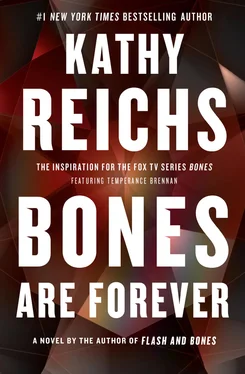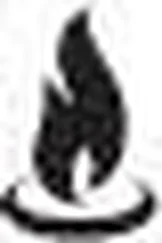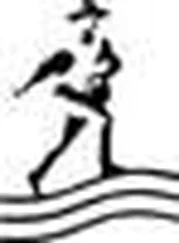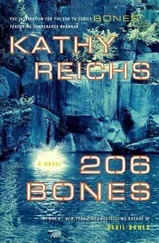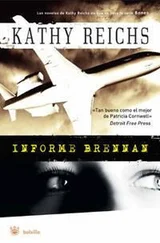LaManche and the SIJ photographer were at the near table. She was very tall and very pale. A tag on her shirt said S. Tanenbaum. I didn’t know her.
Not so the third party. Andrew Ryan.
As we crossed to him, LaManche tucked the baby’s right hand back to her side, lifted and studied her left. He made no comment, jotted no note.
I knew where the chief’s thoughts were pointed. No defense wounds. Of course not. The infant was far too helpless to take action to save her own life, and the manner of death probably had not involved a blow. There would not have been even reflexive reaction.
One thing struck me right off. Everyone in the room was working quietly, talking in hushed tones when a question was posed or an instruction was given. No jokes. No quips. None of the irreverent humor used to ease tension at crime scenes and autopsies.
The baby looked far too vulnerable lying naked on the cold stainless steel.
“Temperance. Thank you.” Over his mask, LaManche’s eyes looked weary and sad. “The child measures thirty-seven centimeters long.”
Haase’s rule: during the last five months of gestation, fetal length in centimeters divided by five equals the number of months of pregnancy. I did a quick calculation.
“She’s small for a full-term baby,” I said.
“ Oui . Crown-rump length. Biparietal diameter. Every measure. The detective and I are wondering with what accuracy you can determine her age.”
I knew what LaManche wanted. A fetus is considered viable after seven months of gestation. If born earlier, survival is possible but unlikely without medical intervention.
“In case you find no abnormality but the mother claims the baby was premature and stillborn,” I said.
“That’s usually their story. The kid was dead, I panicked and stashed the body.” Ryan’s jaw muscles bunched, relaxed. “Without a witness or evidence to the contrary, such cases are bastards to prosecute.”
I thought a moment. “I haven’t looked at the attic baby yet, but the one from the window seat is desiccated and contorted. The tissue is so adhered, it will be tough removing the bones without damaging them. And standard X-rays will be of limited use due to bone and tissue superimposition. I’m thinking the best approach with the mummified remains might be MSCT.”
Four blank looks.
“Multislice computed tomography. I suggest we use it for this baby, too. That way I can measure and observe the skeleton while it’s articulated by soft tissue. A big advantage of MSCT is that it gives an isotopic image and doesn’t distort the anatomical reality. I can measure the long bones on 2-D reconstructions and get anatomical length directly without need for a correction factor. After we view the scans, you can proceed with your regular autopsy.”
As I spoke, my eyes roved the tiny girl on the table. She’d been brushed clean but not yet water-sprayed.
“It cannot hurt.” LaManche looked at Pomier. “The staff at St. Mary’s has been helpful in the past. Phone the radiology department. See if it is possible to use their scanner.”
In his haste to do as directed, Pomier pivoted too quickly. His shoe knocked a caster on a portable light snugged to one end of the table. The floor stand wobbled. Ryan grabbed and steadied the extension arm holding the halogen bulb.
As the light jumped, my eyes caught something my brain didn’t process.
What?
“Shift it again,” I said, leaning close to the baby.
Ryan did.
Yes. There. Where the right shoulder met the curve of the baby’s neck. Not so much a spot as an absence of luminosity, a dullness compared to the surrounding skin.
A few gray cells offered up a suggestion.
Hardly daring to hope, I crossed to the counter, grabbed a hand lens, and viewed the irregularity under magnification.
“Look at this,” I said.

“CÂLISSE,” LAMANCHE WHISPERED.
“You’re thinking print.” Ryan’s tone was so flat, I wondered if he was dubious or simply trying to be objective.
“ALS?” Pomier asked.
“Please,” I said.
“I’ll get the powder,” Tanenbaum said.
Both techs left, reappeared shortly. Pomier was carrying goggles and a black box with a handle on top and a flexible wand projecting from one end. Tanenbaum had a fingerprint kit.
“May we go dark for a few minutes?” I called down to Pelletier.
“No problem. Madame is going for X-rays.”
As I pointed out the area in question, Tanenbaum dusted bright orange powder onto the baby’s neck.
Pomier hooked up the CrimeScope CS-16-500, an alternate light source capable of providing wavelengths ranging from infrared to ultraviolet. When done, he distributed orange-tinted plastic goggles. LaManche, Ryan, Tanenbaum, and I donned them.
“Ready?” Pomier asked.
LaManche nodded.
Pomier killed the overheads, slipped on his goggles, adjusted dials on the CrimeScope, then positioned the wand over the baby.
Slowly, the light crept up the pale little feet. It probed the hills and valleys of the perfect toes, the knees, the groin, the belly. Lit the hollow from which the shriveled umbilical cord hung.
Here and there, filaments lit up like hot white wires. Hairs? Fibers? Maybe useful, maybe not. I tweezed and transferred each into a plastic vial.
Finally, the beam swept the gentle curve where the baby’s right shoulder met its neck. Pomier twisted a knob to return to the lower end of the green spectrum, then slowly moved up the wavelengths.
And there it was. An oval composed of concentric loops and whirls.
We all leaned closer.
“Bonjour,” Pomier said in the darkness.
“I’ll be damned.”
Ryan’s voice at my ear made me aware of decidedly nonmorgue smells. Bay Rum cologne, starched cotton, a hint of male perspiration.
Feeling awkward, I straightened. “Because the skin is so soft and finely textured, it’s easier to get a latent from an infant than from an adult,” I said crisply.
I heard rattling and knew Tanenbaum was placing an orange filter over the lens of her digital camera. We all waited out a long series of clicks. The next sequence of noises told me she was using an adhesive lifter to transfer the print.
“Je l’ai,” she said after several minutes. “I’ve got it.”
Though we worked another half hour in the dark, our efforts revealed nothing else of interest. Still, we were all pumped as hell.
Pomier restored the lights, then went to inquire about the use of the CT scanner at St. Mary’s Hospital.
Tanenbaum hurried off to run our prize through CPIC, the Canadian Police Information Center. Like the U.S.’s AFIS, the Automated Fingerprint Identification System, CPIC functions as a database for fingerprints and other information critical to police investigations.
LaManche resumed his external examination of the baby. Ryan headed upstairs to check for responses to queries he’d circulated about Amy Roberts/Alma Rogers/Alva Rodriguez and Ralph Trees.
When I returned to autopsy room four, Lisa had finished photographing both LSJML-49277 and LSJML-49278. She’d also popped X-rays of the former onto light boxes ringing the room.
I moved through the films, pessimistic. I was right. The window-seat baby was so tightly constricted that overlap of the bones made assessment difficult and measurement impossible. Frustrated, I crossed to the table where LSJML-49278 now lay on its unrolled towel beside the window-seat baby.
The attic baby had been reduced to a skeleton and fragments of dry ligament. Lisa had arranged some of the bones to form a miniature person. Most lay to one side on the grimy green terry cloth.
Читать дальше
